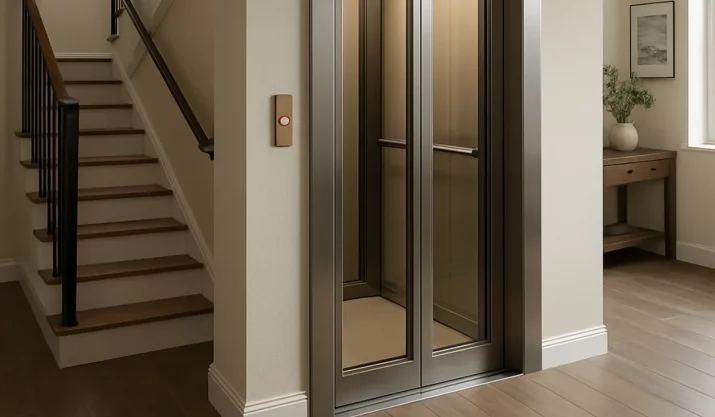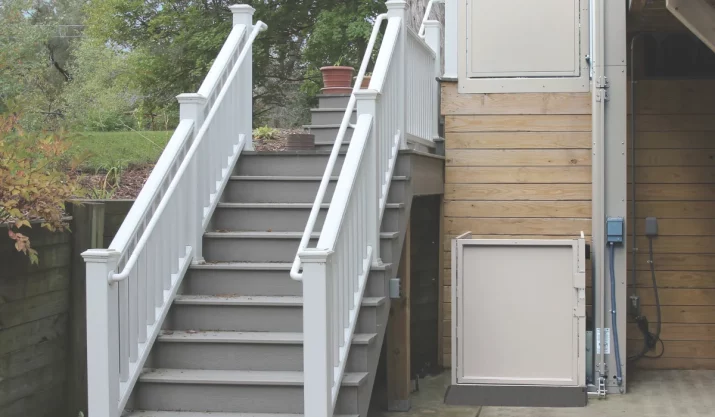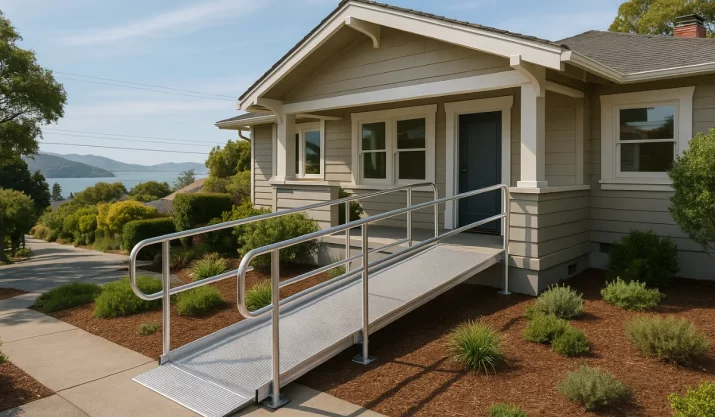How To Install A Split-Level Home Elevator Without Remodeling

Table of Contents
- Key takeaways
- Why Installing a Split-Level Home Elevator Without Remodeling Works
- Elevator models suited for split-level homes
- Retrofitting an elevator vs. major remodeling
- Space-saving elevator options for existing homes
- Elevator cost considerations for split-level homes
- Making the right elevator choice for your California split-level home
- FAQs
Many California homeowners enjoy the charm of split-level homes. But if you or a loved one has mobility issues, the staggered floors can make daily life harder. A split-level elevator can solve that problem. The best part is, you don’t need major remodeling to install one.
Modern split-level home elevators are compact, affordable, and easy to install. You don’t need a large elevator shaft or major construction. With many models available, you can find one that fits your layout and lifestyle. A trusted California elevator company can improve mobility and help maintain your home’s value.
In this guide, we cover elevator models for existing homes, space-saving options, and the difference between retrofitting and remodeling.
Key takeaways
- Installing a split-level home elevator without remodeling is possible. Models like shaftless lifts and PVEs don’t need big renovations.
- Retrofitting a residential elevator is often cheaper than building a traditional elevator shaft.
- Space-saving designs protect your floor plan while giving you safe, reliable access.
- A home lift can boost resale value, improve safety, and support aging in place.
Why Installing a Split-Level Home Elevator Without Remodeling Works
In the past, adding a residential elevator meant major construction. You needed a hoistway, a machine room, and significant changes to your home. Today, things are different. Modern elevator system designs fit seamlessly into existing homes with minimal renovation work.
- Shaftless home lifts are self-supporting and require minimal floor space.
- Pneumatic vacuum elevators (PVEs) use air pressure to move. They are easy and quick to install, don’t need a machine room, and reduce construction costs.
These designs make it easier for homeowners to add accessibility without giving up living space.
In many California split-level homes, half-staircases connect floors. A compact home lift makes moving between levels easier while saving space.
Elevator models suited for split-level homes
When you choose an elevator, you’ll want one that’s both practical and comfortable. Here are some elevator models that work well with split-level homes:
- Shaftless home lifts: No shaft, no machine room, and minimal construction. Great for smaller homes or tight layouts.
- Pneumatic vacuum elevators (PVEs): Tube-shaped, powered by air pressure, and self-supporting. They fit well in open spaces like living rooms or hallways.
- Hydraulic elevators: A reliable option for traditional elevator setups, but they usually require more space and bigger renovations.
For split-level homeowners, shaftless or pneumatic models are the best fit. They save space, minimize remodeling, and support aging in place.
An experienced elevator company can also walk you through elevator cost, safety features, and customization options.
Retrofitting an elevator vs. major remodeling
For split-level homes, retrofitting is the more intelligent, more cost-effective choice. Retrofitting means installing a residential elevator into your existing layout without changing the structure of your home.
Compared to remodeling, retrofitting:
- Has fewer construction costs.
- Keeps your current floor plan.
- Keeps disruptions to your daily life minimal.
A retrofitted home lift may use smaller doors, a self-supporting frame, or flexible placement. It saves time and money compared to a complete remodel.
In California’s real estate market, mobility upgrades like residential elevators and stair lift alternatives make homes more attractive. Buyers often look for wheelchair-accessible layouts or aging-in-place features. Installing a home lift can set your property apart without the cost of building a whole elevator shaft.
Space-saving elevator options for existing homes
Even with limited floor space, you still have strong elevator options.
- Shaftless lifts: Take up little space and need no machine room.
- PVEs: Standalone, air-powered, and work well in open spaces near staircases.
- Platform lifts: A simpler alternative to traditional elevators. They work well for wheelchair lifts, are easy to install, and take up less space.
These models fit well in older split-level homes, where the floor plan may not leave much room for renovations. A space-saving design gives you accessibility while keeping living rooms and other key areas open.
Elevator cost considerations for split-level homes
One of the first questions homeowners ask is about elevator cost. Adding a split-level home elevator without remodeling usually costs less than a traditional system.
Prices depend on:
- Elevator models (shaftless, PVEs, or hydraulic).
- Safety features.
- Customization options.
- Construction needs like electrical work or new door openings.
Even though retrofitting costs less than building an elevator shaft, you should budget for some adjustments. Many California elevator companies include warranties, offering protection and confidence in your investment.
Another benefit is long-term savings. If you plan to age in place, a cost-effective elevator helps you avoid moving or paying for repeated renovations. It may also increase your home value, which can offset part of the expense.
Making the right elevator choice for your California split-level home
The best split-level home elevator for you depends on your space, needs, and budget. With modern designs like shaftless lifts and PVEs, you don’t need major remodeling to gain accessibility.
For California homeowners, these systems offer real benefits:
- Better mobility.
- Increased safety.
- Stronger home value.
Whether you want to stay in your home for years or prepare for resale, a residential elevator is a wise investment in comfort and independence.
California Mobility’s team includes Certified Aging-in-Place Specialists who help match you with the right home lift for your needs and layout. Our team specializes in home lifts and elevator installation for existing homes and split-level properties across the state.
Ready to explore your options? Contact us today for expert help in finding the right elevator for your home.








